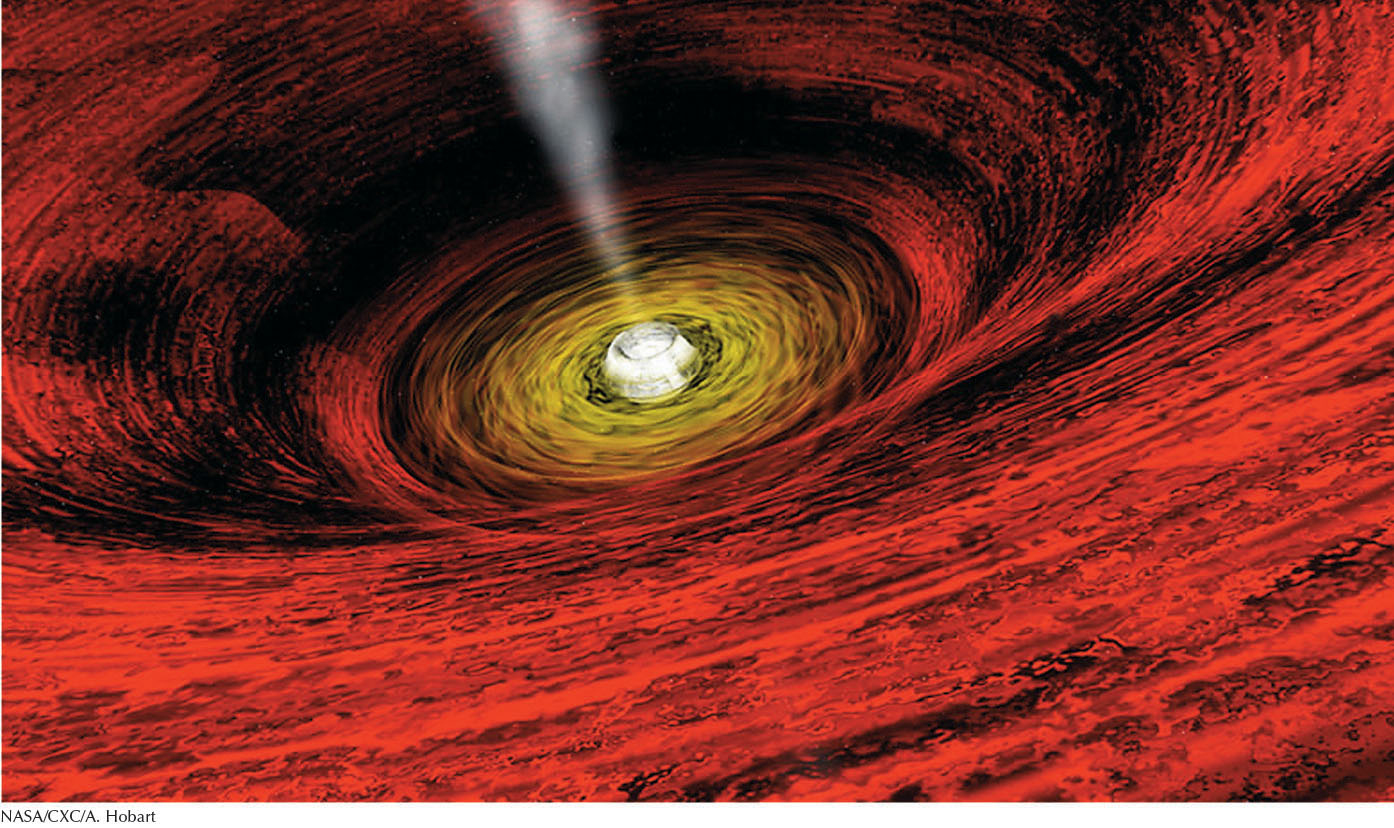435
CHAPTER 14

Black Holes: Matters of Gravity
WHAT DO YOU THINK?
 Are black holes empty holes in space? If not, what are they?
Are black holes empty holes in space? If not, what are they?
 Does a black hole have a solid surface? If not, what is at its surface?
Does a black hole have a solid surface? If not, what is at its surface?
 What power or force enables black holes to draw things into themselves?
What power or force enables black holes to draw things into themselves?
 How close to a black hole do you have to be for its special effects to be apparent?
How close to a black hole do you have to be for its special effects to be apparent?
 Can you use black holes to travel to different places in the universe?
Can you use black holes to travel to different places in the universe?
 Do black holes last forever? If not, what happens to them?
Do black holes last forever? If not, what happens to them?
Answers to these questions appear in the text beside the corresponding numbers in the margins and at the end of the chapter.
436
Stars are formed and held together by gravity. At each stage of stellar development that we have considered, stars are prevented from collapsing further by the outward forces generated by fusion, electromagnetism, and electron or neutron degeneracy pressure. In this chapter we explore the fate of stellar remnants with more than 3 M⊙, in which gravitation “wins” the battle, but eventually loses the war between the inward and outward forces.
When the gravitational force of an object is so great that it overcomes all opposing repulsive forces or pressures (like neutron degeneracy pressure), the object collapses in on itself. Its gravitational attraction then becomes so strong that nothing—not even light—can escape from it. When this happens, the matter and the space around it become a black hole.
Black holes inspire awe, fear, and uncertainty. Many people harbor the mistaken belief that black holes are giant vacuum cleaners destined to “suck up” all matter in the universe. Happily, the equations that describe black holes reveal that they are more benign than that, but they are still truly strange.
The idea that gravity could prevent matter from escaping was first put forward in the eighteenth century, but it was not until the twentieth century, when Albert Einstein presented his theories of relativity (explaining how motion, mass, and energy affect the behavior of everything in the universe), that the modern concept of a black hole developed. We must first explore his relativity theories in order to understand these exotic objects.
In this chapter you will discover
 that Einstein’s theory of general relativity predicts the existence of regions of space and time that are severely distorted by the extremely dense matter they contain
that Einstein’s theory of general relativity predicts the existence of regions of space and time that are severely distorted by the extremely dense matter they contain
 that space and time are not separate entities
that space and time are not separate entities
 how black holes arise
how black holes arise
 the surprisingly simple theoretical properties of black holes
the surprisingly simple theoretical properties of black holes
 that X-rays and jets of gas are created near many black holes
that X-rays and jets of gas are created near many black holes
 the fate of black holes
the fate of black holes
 the unsurpassed energy emitted by gamma-ray bursts
the unsurpassed energy emitted by gamma-ray bursts